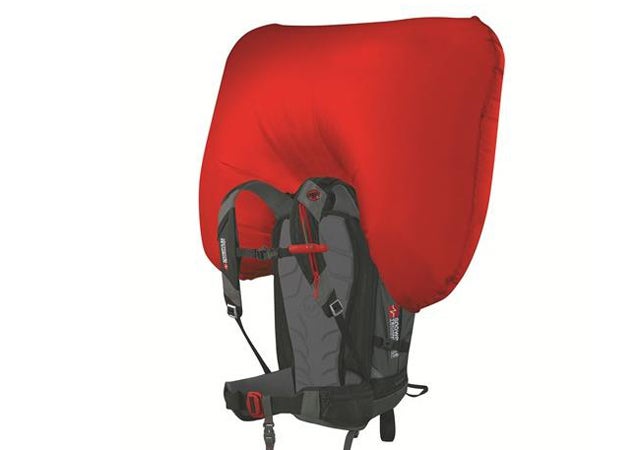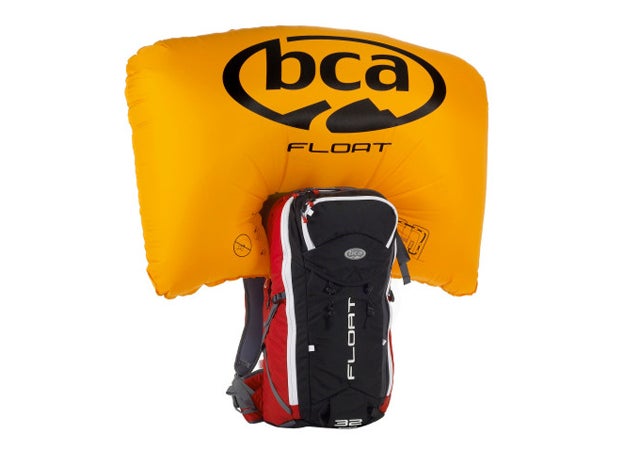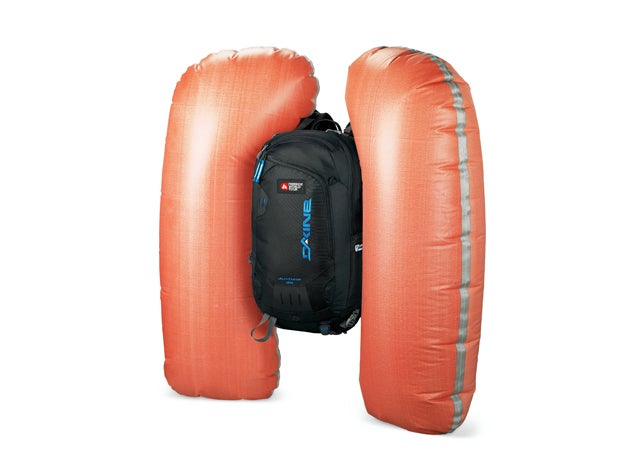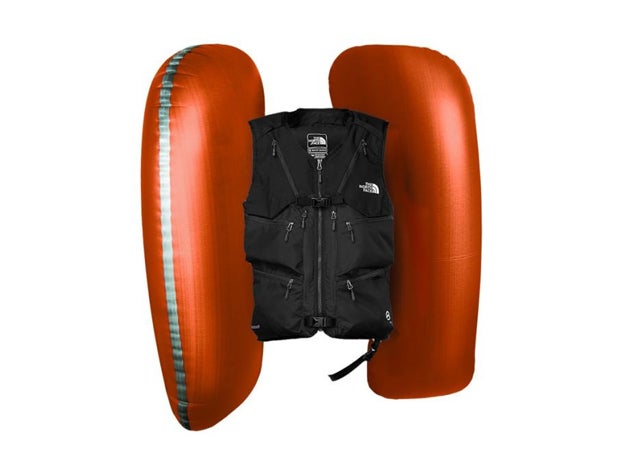The North Face Powder Guide ABS Vest
BEST FOR: SIDECOUNTRY EXCURSIONS
TNF figured out how to put the airbag technology in a vest instead of a pack. It’s a bit bulky, cut wide and roomy to fit over your jacket, but with eight pockets up front and three tool sleeves and another pocket in back, there’s no need to carry a daypack as well. 5.5 lbs
All air-bag-equipped packs work roughly the same way: yank the toggle on the shoulder strap to activate a canister of compressed gas, which inflates one or two air bags in two to three seconds.
Snowpulse Lite 35 Pack

BEST FOR: LONG TOURS
At just under four and a half pounds, this was the lightest air-bag pack in our test. The day-tour-size, top-loading Lite 35 uses a life-preserver-shaped air bag, and it afforded the most head and neck protection of the packs we looked at. A dedicated tool-storage area and hydration-bladder sleeve round out the package. 4.4 lbs
Backcountry Access Float 32 Pack

BEST FOR: THE BUDGET MINDED
The Float is the most affordable pack on the market (by a couple hundred bucks). A proprietary system uses compressed air that can be filled at any dive shop with an adapter. Left-handed? The trigger can be set up on either side. 6.4 lbs
Dakine Altitude ABS 25L Pack

BEST FOR: VERSATILITY
Whereas the BCA and Snowpulse use compressed air, both the Dakine pack and the North Face vest use nitrogen canisters (from German company ABS), which are more stable at elevation and low temperatures and can be refilled or exchanged at REI stores. Smart: you can remove the ABS system and use the Altitude as a normal pack. 7.4 lbs


